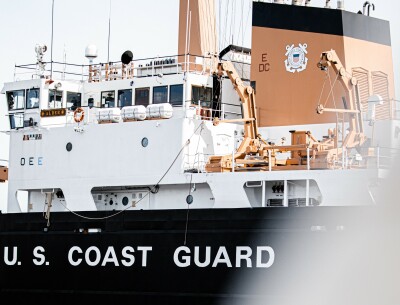Last weekend prognosticators of the radio, TV, newspapers and Web were all saying New England’s first storm of the season would hit on Saturday, December 14th. And they were right. Many places got a foot of snow and a lot of wind late Saturday night. While people died in automobile accidents that could be blamed on the storm as it swirled across the country, no boats in New England — at least as far as I know — went down and no lives were lost.
If only mariners caught in the storm on Saturday, December 14, 1839, had the benefit of the weather predictions that we enjoy. That was 174 years ago. The day started out mild and clear, pleasant enough that many boats hoisted sail and left a safe anchorage for Boston, New York and other points south.
During the night, the wind turned to the southeast and the first of three gales — the others were December 22 and December 27 — swung into New England near midnight, with Massachusetts receiving the worst of it.
When the storms were over, 150 people were dead, 90 boats sunk and nearly 200 dismasted, driven ashore or otherwise damaged. Most of the boats were coastal schooners, for this was before the railroad lines and highways that allowed goods to be trucked and freighted up and down the Atlantic coast. If you wanted wood, flour, coal, sugar, corn — you name it — the stuff was hauled on a coastal schooner.
With the exception of possibly one boat, the schooner Transport, which capsized December 28, no fishing boats went down in the December storms. Part of the reason might be that the Georges Bank winter fishery started in 1830 and most of the fleet, especially from Gloucester, was offshore. (That doesn’t mean the winter offshore fishery was a safe place. Between 1830 and 1873, Gloucester lost 1,250 men and 281 schooners, with most of them in the offshore fishery.)
If in fact that’s where the Gloucester fleet was, there were still some Gloucester fishermen to help out in the December storm. In Gloucester — in the words of one account — “such a scene of terrific and horrible ruin has not been witnessed in that harbor within the memory of the oldest resident, a man of 104 years of age, who has always lived there.”
More than 50 boats were driven ashore, dismasted or carried to sea in Gloucester and about 50 lives lost. Many of the dead were scattered along the beach. In one case the “body of a woman lashed to the windlass-bitts of a Castine [Maine] schooner.”
But at the height of the storm, as recounted in a 28-page booklet “Shipwrecks of December, 1839, and Burning of the Lexington,” the boys of Gloucester stepped up:
“In the midst of this scene of terror, the hardy and noble fishermen of Cape Ann, fully proved that a sailor’s jacket seldom covers a craven heart. They manned two boats, the Custom House boat and the Van Buren; and fearlessly risked their lives for the safety of their fellow creatures. Vessel after vessel was visited by them; they made their way over the tops of mountain waves, and through the gaping chasms of the hungry waters; and from the very teeth of greedy death, plucked many a poor, despairing, and exhausted fellow; bringing him safe to shore. Excellent, generous men!”
Noble men indeed!






